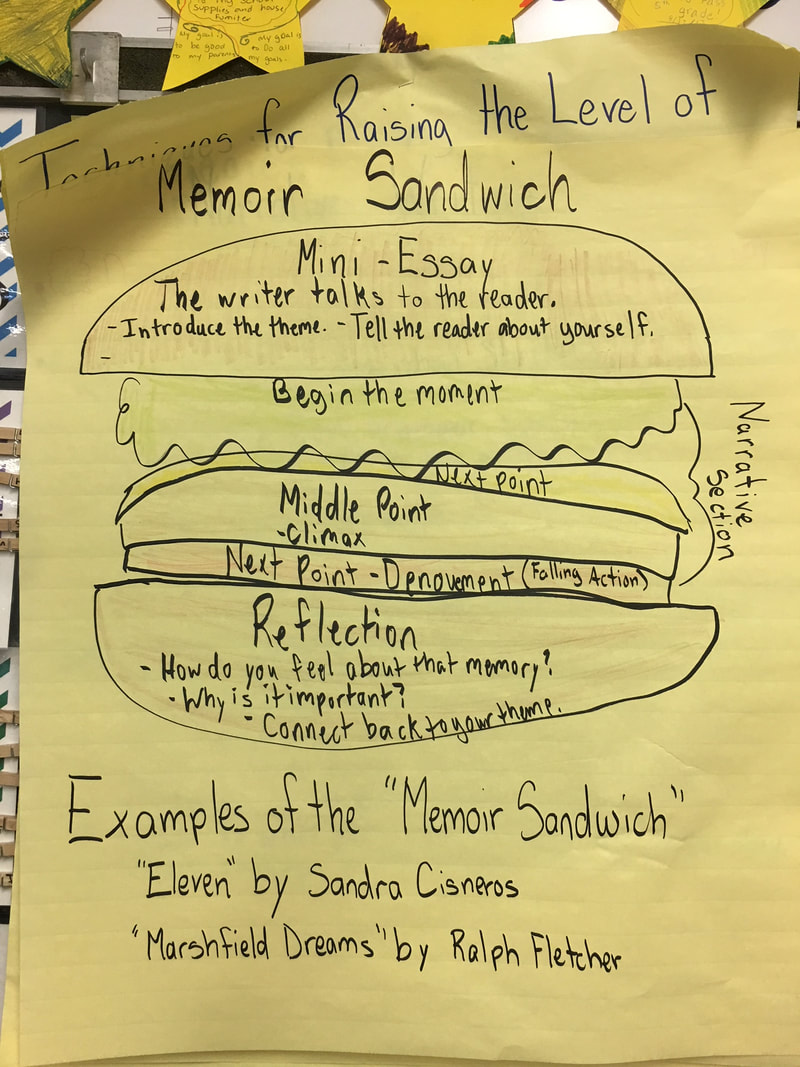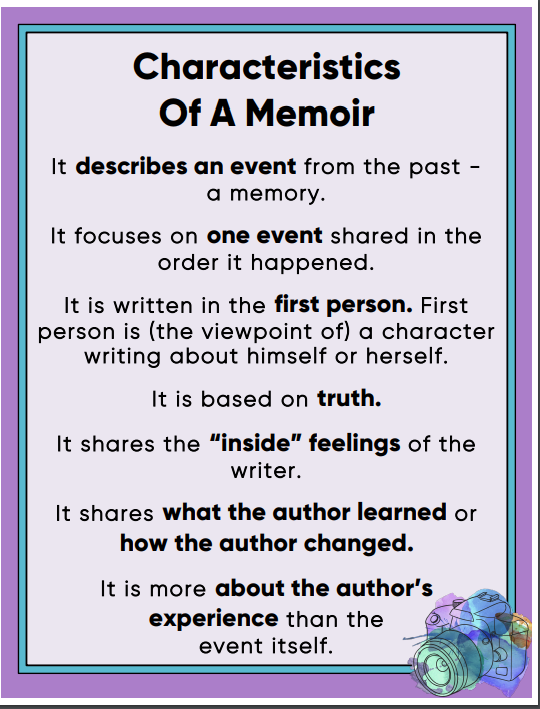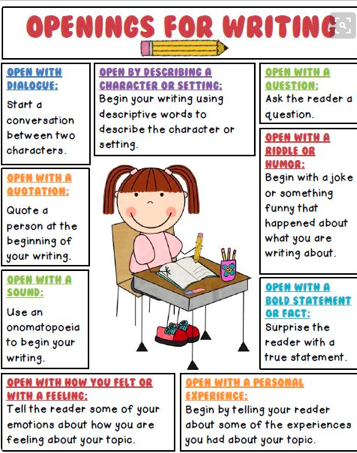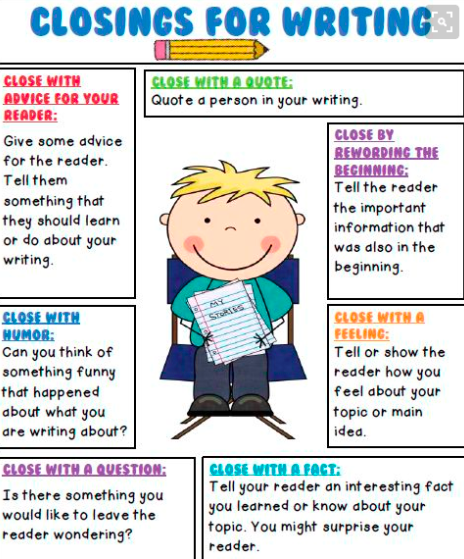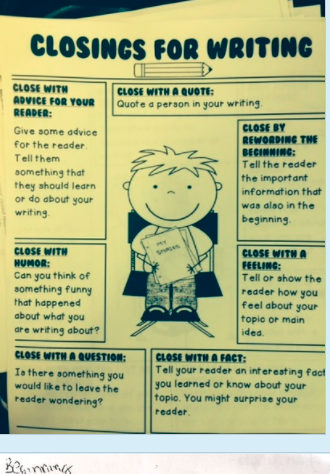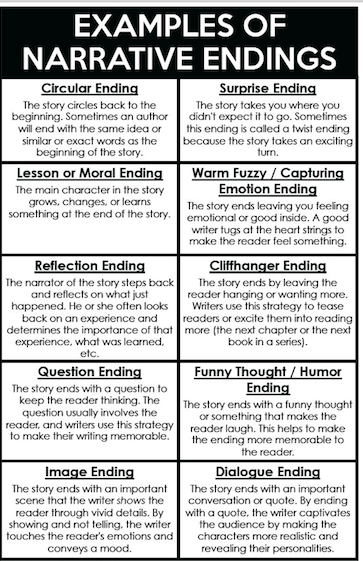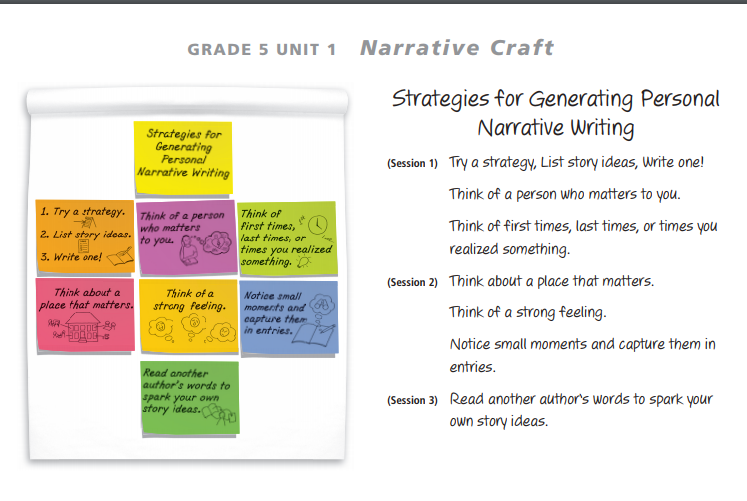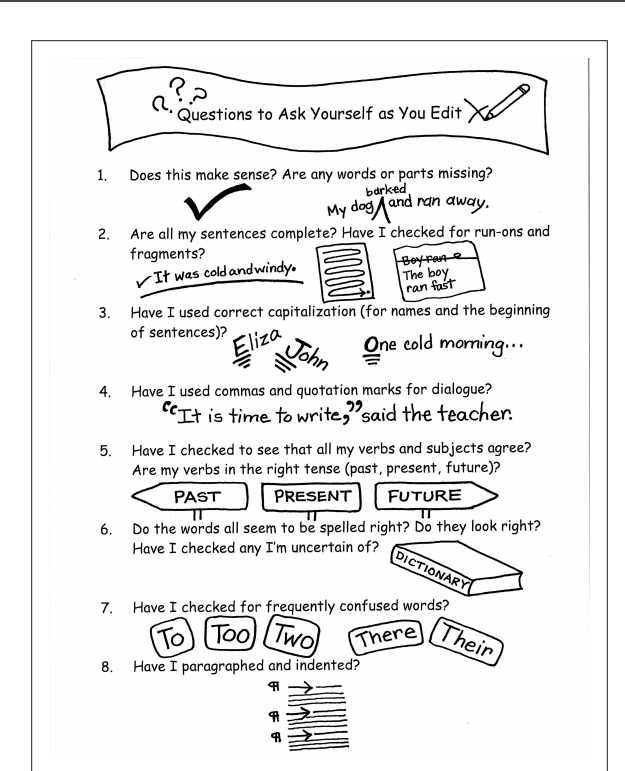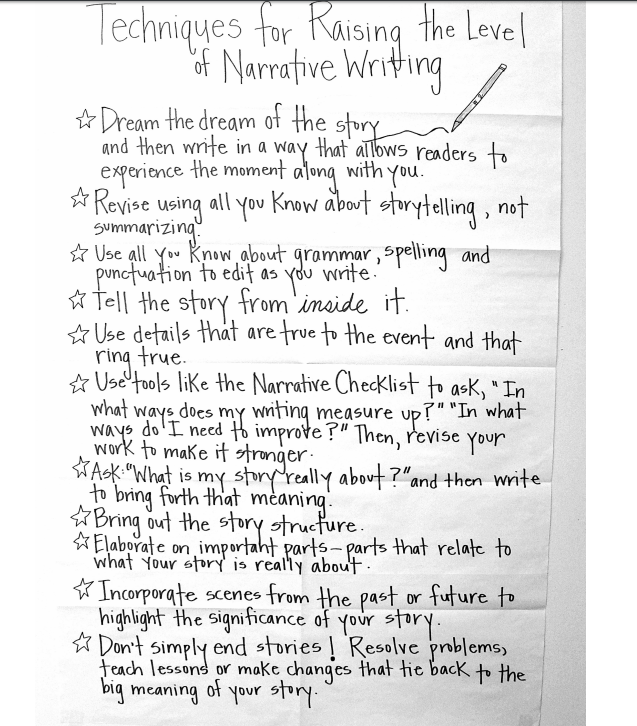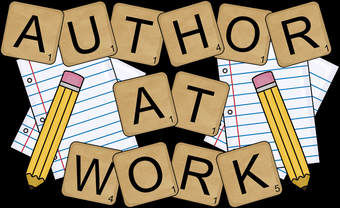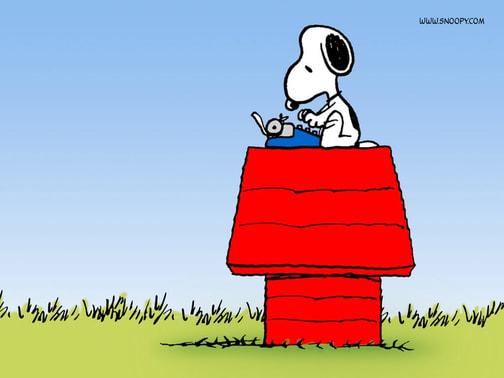SOME TOPICS FIFTH GRADERS ARE PASSIONATE ABOUT:
· Bullying in schools
· Peer pressure
· Parent pressure to be successful
· National safety/security
TAP VS. BOTTLED WATER
· Divorce
· Cliques
· Racial groups in school
· Censorship
· Overpaid professional athletes
· Violent video games and/or television shows
· DO ANIMALS BELONG IN ZOOS?
· Inappropriate language in music and music videos
· Family members who smoke
· Over bearing parents who coach their kids in sporting events
· Dress codes in school
· Year round school
· Extended school day
· Homework
· Pollution
· Child/animal abuse
· Internet safety
· Global warming/protecting the environment
· Obesity in kids
· Steroids in athletics
· Lowering the voting age
· Technology Crimes
· Bad celebrity role models
· ECONOMY
· Universal health care
· Gun control
· Homelessness
· Money Spent on new sports stadium
Argumentative Essay Pre - Assessment
Think of a topic or issue that you know and care about, an issue around which you have strong feelings. Tomorrow you will have 45 minutes to write an opinion or argument text in which you will write your opinion or claim and tell reasons why you feel that way. When you do this, draw on everything you know about essays, persuasive letters, and reviews. If you want to find and use information from a book or another outside source, you may bring that with you tomorrow.
Please keep in mind that you'll have 45 minutes to complete this, so you will need to plan, draft, revise, and edit in one sitting. In your writing be sure to include:
- Write an introduction
- State your opinion
- Give reasons and evidence
- Organize your writing
- Acknowledge counterclaims
- Use transitional words/phrases
- Write a conclusion
Think of a topic or issue that you know and care about, an issue around which you have strong feelings. Tomorrow you will have 45 minutes to write an opinion or argument text in which you will write your opinion or claim and tell reasons why you feel that way. When you do this, draw on everything you know about essays, persuasive letters, and reviews. If you want to find and use information from a book or another outside source, you may bring that with you tomorrow.
Please keep in mind that you'll have 45 minutes to complete this, so you will need to plan, draft, revise, and edit in one sitting. In your writing be sure to include:
- Write an introduction
- State your opinion
- Give reasons and evidence
- Organize your writing
- Acknowledge counterclaims
- Use transitional words/phrases
- Write a conclusion
TEXT SETS ON IMPORTANT ISSUES:
Sample Question-
Do teachers assign too much homework?
Online Articles
“This House would ban homework” – from idebate. org http://idebate.org/debatabase/debates/children/house-would-ban-homework
“Do our kids have too much homework?” by: Marian Wilde in Great!Kids http://www.greatschools.org/gk/articles/homework-is-too-much/
“Too Much Homework? Maybe Not” by Cameron Keady with TFK Reporting, March 19, 2014. http://www.timeforkids.com/news/too-much-homework-maybe-not/152921
”Help! Homework is wrecking my home life!” by Chaika, Gloria. Education World. 2000. http://www.educationworld.com/a_admin/admin/admin182.shtml
“Students Under Stress: Do schools assign too much homework” published by CQ Press, a division of Congressional Quarterly Inc. (long article – go to pg. 7 and read the part asking if schools assign too much homework) http://ceep.indiana.edu/hssse/pdfs/Students%20Do%20More%20Socializing%20Than%20Studying%20CQ%20Reviewer%20July%202007.pdf
“Stanford Research Shows Pitfalls of Too Much Homework,” Stanford Report, March 10, 2014. http://news.stanford.edu/news/2014/march/too-much-homework-031014.html
Multimedia
(video) “Are Teachers Giving You Too Much Homework?” By DNews, YouTube, January 27, 2016. http://safeshare.tv/v/7h1olTR3KIo
(video) “Homework in Australia: Less is More.” From WISE in Learning World. YouTube, January 27, 2016. http://safeshare.tv/v/Sx1V8uYwUGs
(video) “Home in America.” Infographic from the Brookings Institute, YouTube, January 27, 2016. http://safeshare.tv/v/ArKr1exR2rg
(video) “Do Kids Really Need Homework?” a report by CBS News, YouTube, January 27, 2016. http://safeshare.tv/v/HFp9Ll11vSg
Bottled Water vs Tap WaterShould we drink bottled water or tap water?
National Geographic News: What’s Best for Kids: Bottled Water or Fountains?”
NewsELA: Bottled Water Hurts the Earth
National Geographic Kids: Drinking Water: Bottled or from the Tap?
Scholastic: Is Bottled Water Really Better?
New Aquafina Bottles Reduce Plastic Use by 50 Percent
National Geographic: Why is Tap Water Better than Bottled Water?
EcoWatch: Why You should Never Drink Bottled Water Again
Back2Tap
IBWA: International Bottled Water Association
Videos:
Bottled Water Matters Video
ABC News: Bottled Water vs Tap Water. Can You Tell the Difference?
Should schools be in session all year round?
Online Articles
“The Pros and Cons of Year-Round School.” From Scholastic. http://www.scholastic.com/parents/resources/article/choosing-schools-programs/pros-and-cons-year-round-schools
“Research Spotlight on Year-Round Education.” From the NEA. http://www.nea.org/tools/17057.htm
“Year-Round School.” From Family Education. http://school.familyeducation.com/experimental-education/educational-research/41266.html
“Districts Weigh Pros and Cons of Year-round Schools.” From the NEA. http://neatoday.org/2014/09/04/districts-weigh-pros-and-cons-of-year-round-schools-2/
“Year-Round Schooling: How it Affects Students.” From Education Week. http://blogs.edweek.org/edweek/education_futures/2013/11/year-round_schooling_how_it_affects_students.html
“Could Students Benefit from Year-Round School?” From PBS. http://www.pbs.org/newshour/bb/always-ready-go-back-students-may-benefit-year-round-schooling/
Multimedia
(video) “Interview on Pros and Cons of Year-Round School.” Channel 7 News. YouTube. http://safeshare.tv/v/ss56982077896c5
(video) “Why Students May Benefit from a Year-Round Calendar.” PBS. YouTube. http://safeshare.tv/v/ss569823e6587d2
Should Cell Phones Be Allowed in School?
Online Articles
“Should Cell Phones be Allowed in School?” NYT upfront Newsmagazine for Kids, May 9, 2011. http://teacher.scholastic.com/scholasticnews/indepth/upfront/debate/index.asp?article=d1211
“Cell Phones in School,” Safe Search Kids, January 26, 2016. http://www.safesearchkids.com/cell-phones-in-school/#.VqmOzZorLIU
“As Schools Lift Bans on Cell Phones, Educators Learn Pros and Cons.” nea Today, February 23, 2015. http://www.safesearchkids.com/cell-phones-in-school/#.VqmOzZorLIU
“Do Kids Need their own Cell Phones?” from Debate! Time for Kids, September 21, 2013. http://www.timeforkids.com/news/debate/47056
“Every Child Should have a Moble Phone.” (Junior)” – from idebate.org http://idebate.org/es/node/55641
“This House Believes Children Should be Allowed to Own and Use Mobile Phones,” from debatabase. http://www.ww.idebate.org/debatabase/debates/science-technology/house-believes-children-should-be-allowed-own-and-use-mobile-phones
Multimedia
(video) “Kids with Cell Phones: How Young is Too Young?” CBS News Report, YouTube, January 27, 2016. https://www.youtube.com/watch?v=2jKlq69KzCA
Zoos – DebateShould people support or boycott zoos?
• “Zoos” from Ducksters
• “Zoos” from allaboutanimals.org.uk
• “Are Zoos a Good Thing?”
• “Tigers Cuddle With Apes” (National GeographicKids)
• “Giant Panda Cubs Give Hope to an Endangered Species” by David George Gordonhttp://kids.nationalgeographic.com/kids/stories/animalsnature/giantpandacubs/
• “Tigers At Home In the Bronx Zoo” by Quinn Jacobson, Scholastic Kids Press Corps http://www.scholastic.com/browse/article.jsp?id=10704
• “What Zoos Do” http://teacher.scholastic.com/scholasticnews/indepth/endangered_species/zoos/index.asp?article=whatzoosdo
• “Some clever chimps stage escape at Kansas City Zoo” (By Kansas City Star, adapted by Newsela staff, April 15, 2014) Describes how some chimps caused a “Code Red” by escaping from their enclosure at the zoo. https://newsela.com/articles/chimp-escape/id/3419/
• “Dogs work with elephants at Pittsburgh Zoo” (By Pittsburg Post-Gazette, adapted by Newsela staff). Animals rights group complains it isn’t safe. https://newsela.com/articles/dogs-elephantherding/id/6025/
• Public benefits of AZA—Accredited Zoos and Aquariums https://www.aza.org/public-benefits/
• “Animal Enrichment in Zoos.” https://www.aza.org/enrichment/
Polar Bears in Zoos. From Polar Bear International. http://www.polarbearsinternational.org/about-polar-bears/essentials/polar-bears-in-zoos
Zoos: Pitful Prisons. From PETA International. http://www.peta.org/issues/animals-in-entertainment/animals-used-entertainment-factsheets/zoos-pitiful-prisons/
Multimedia
(video) “The Pros and Cons of Zoos.” From D News. YouTube. http://safeshare.tv/v/ss5698171903f61
(video) Captive Animal Misery in European Zoos. Youtube. http://safeshare.tv/v/ss5698124019ee1
(video) Feeding the Animals at the Smithsonian National Zoo. Youtube. http://safeshare.tv/v/ss5698147d37602
Do teachers assign too much homework?
Online Articles
“This House would ban homework” – from idebate. org http://idebate.org/debatabase/debates/children/house-would-ban-homework
“Do our kids have too much homework?” by: Marian Wilde in Great!Kids http://www.greatschools.org/gk/articles/homework-is-too-much/
“Too Much Homework? Maybe Not” by Cameron Keady with TFK Reporting, March 19, 2014. http://www.timeforkids.com/news/too-much-homework-maybe-not/152921
”Help! Homework is wrecking my home life!” by Chaika, Gloria. Education World. 2000. http://www.educationworld.com/a_admin/admin/admin182.shtml
“Students Under Stress: Do schools assign too much homework” published by CQ Press, a division of Congressional Quarterly Inc. (long article – go to pg. 7 and read the part asking if schools assign too much homework) http://ceep.indiana.edu/hssse/pdfs/Students%20Do%20More%20Socializing%20Than%20Studying%20CQ%20Reviewer%20July%202007.pdf
“Stanford Research Shows Pitfalls of Too Much Homework,” Stanford Report, March 10, 2014. http://news.stanford.edu/news/2014/march/too-much-homework-031014.html
Multimedia
(video) “Are Teachers Giving You Too Much Homework?” By DNews, YouTube, January 27, 2016. http://safeshare.tv/v/7h1olTR3KIo
(video) “Homework in Australia: Less is More.” From WISE in Learning World. YouTube, January 27, 2016. http://safeshare.tv/v/Sx1V8uYwUGs
(video) “Home in America.” Infographic from the Brookings Institute, YouTube, January 27, 2016. http://safeshare.tv/v/ArKr1exR2rg
(video) “Do Kids Really Need Homework?” a report by CBS News, YouTube, January 27, 2016. http://safeshare.tv/v/HFp9Ll11vSg
Bottled Water vs Tap WaterShould we drink bottled water or tap water?
National Geographic News: What’s Best for Kids: Bottled Water or Fountains?”
NewsELA: Bottled Water Hurts the Earth
National Geographic Kids: Drinking Water: Bottled or from the Tap?
Scholastic: Is Bottled Water Really Better?
New Aquafina Bottles Reduce Plastic Use by 50 Percent
National Geographic: Why is Tap Water Better than Bottled Water?
EcoWatch: Why You should Never Drink Bottled Water Again
Back2Tap
IBWA: International Bottled Water Association
Videos:
Bottled Water Matters Video
ABC News: Bottled Water vs Tap Water. Can You Tell the Difference?
Should schools be in session all year round?
Online Articles
“The Pros and Cons of Year-Round School.” From Scholastic. http://www.scholastic.com/parents/resources/article/choosing-schools-programs/pros-and-cons-year-round-schools
“Research Spotlight on Year-Round Education.” From the NEA. http://www.nea.org/tools/17057.htm
“Year-Round School.” From Family Education. http://school.familyeducation.com/experimental-education/educational-research/41266.html
“Districts Weigh Pros and Cons of Year-round Schools.” From the NEA. http://neatoday.org/2014/09/04/districts-weigh-pros-and-cons-of-year-round-schools-2/
“Year-Round Schooling: How it Affects Students.” From Education Week. http://blogs.edweek.org/edweek/education_futures/2013/11/year-round_schooling_how_it_affects_students.html
“Could Students Benefit from Year-Round School?” From PBS. http://www.pbs.org/newshour/bb/always-ready-go-back-students-may-benefit-year-round-schooling/
Multimedia
(video) “Interview on Pros and Cons of Year-Round School.” Channel 7 News. YouTube. http://safeshare.tv/v/ss56982077896c5
(video) “Why Students May Benefit from a Year-Round Calendar.” PBS. YouTube. http://safeshare.tv/v/ss569823e6587d2
Should Cell Phones Be Allowed in School?
Online Articles
“Should Cell Phones be Allowed in School?” NYT upfront Newsmagazine for Kids, May 9, 2011. http://teacher.scholastic.com/scholasticnews/indepth/upfront/debate/index.asp?article=d1211
“Cell Phones in School,” Safe Search Kids, January 26, 2016. http://www.safesearchkids.com/cell-phones-in-school/#.VqmOzZorLIU
“As Schools Lift Bans on Cell Phones, Educators Learn Pros and Cons.” nea Today, February 23, 2015. http://www.safesearchkids.com/cell-phones-in-school/#.VqmOzZorLIU
“Do Kids Need their own Cell Phones?” from Debate! Time for Kids, September 21, 2013. http://www.timeforkids.com/news/debate/47056
“Every Child Should have a Moble Phone.” (Junior)” – from idebate.org http://idebate.org/es/node/55641
“This House Believes Children Should be Allowed to Own and Use Mobile Phones,” from debatabase. http://www.ww.idebate.org/debatabase/debates/science-technology/house-believes-children-should-be-allowed-own-and-use-mobile-phones
Multimedia
(video) “Kids with Cell Phones: How Young is Too Young?” CBS News Report, YouTube, January 27, 2016. https://www.youtube.com/watch?v=2jKlq69KzCA
Zoos – DebateShould people support or boycott zoos?
• “Zoos” from Ducksters
• “Zoos” from allaboutanimals.org.uk
• “Are Zoos a Good Thing?”
• “Tigers Cuddle With Apes” (National GeographicKids)
• “Giant Panda Cubs Give Hope to an Endangered Species” by David George Gordonhttp://kids.nationalgeographic.com/kids/stories/animalsnature/giantpandacubs/
• “Tigers At Home In the Bronx Zoo” by Quinn Jacobson, Scholastic Kids Press Corps http://www.scholastic.com/browse/article.jsp?id=10704
• “What Zoos Do” http://teacher.scholastic.com/scholasticnews/indepth/endangered_species/zoos/index.asp?article=whatzoosdo
• “Some clever chimps stage escape at Kansas City Zoo” (By Kansas City Star, adapted by Newsela staff, April 15, 2014) Describes how some chimps caused a “Code Red” by escaping from their enclosure at the zoo. https://newsela.com/articles/chimp-escape/id/3419/
• “Dogs work with elephants at Pittsburgh Zoo” (By Pittsburg Post-Gazette, adapted by Newsela staff). Animals rights group complains it isn’t safe. https://newsela.com/articles/dogs-elephantherding/id/6025/
• Public benefits of AZA—Accredited Zoos and Aquariums https://www.aza.org/public-benefits/
• “Animal Enrichment in Zoos.” https://www.aza.org/enrichment/
Polar Bears in Zoos. From Polar Bear International. http://www.polarbearsinternational.org/about-polar-bears/essentials/polar-bears-in-zoos
Zoos: Pitful Prisons. From PETA International. http://www.peta.org/issues/animals-in-entertainment/animals-used-entertainment-factsheets/zoos-pitiful-prisons/
Multimedia
(video) “The Pros and Cons of Zoos.” From D News. YouTube. http://safeshare.tv/v/ss5698171903f61
(video) Captive Animal Misery in European Zoos. Youtube. http://safeshare.tv/v/ss5698124019ee1
(video) Feeding the Animals at the Smithsonian National Zoo. Youtube. http://safeshare.tv/v/ss5698147d37602
POETRY PACKET:
| poetrypacket.pdf | |
| File Size: | 15082 kb |
| File Type: | |
CINQUAINS:
| cinquains.pdf | |
| File Size: | 454 kb |
| File Type: | |
LIMERICK
| limerick.pdf | |
| File Size: | 1697 kb |
| File Type: | |
DIAMANTE
| diamante.pdf | |
| File Size: | 1726 kb |
| File Type: | |
HAIKU:
| haiku.pdf | |
| File Size: | 531 kb |
| File Type: | |
START AND STOP POEMS:
| startansstoppoems.pdf | |
| File Size: | 552 kb |
| File Type: | |
www.weareteachers.com/28-must-share-poems-for-elementary-school/
INTRO TO POETRY: www.poets.org/poetsorg/text/poems-kids
| poetryintro.pdf | |
| File Size: | 1961 kb |
| File Type: | |
LETTER POEMS-LINE BREAKS
| letterpoemlinebreakpoetrylesson2.pdf | |
| File Size: | 1143 kb |
| File Type: | |
MYTH WRITING:
INTRODUCTION TO MYTH WRITING: HOW DO MYTHS HELP EXPLAIN A NATURAL PHENOMENON AND HOW CAN I CREATE MY OWN?
http://teacher.scholastic.com/writewit/mff/myths_mymyth.htm
Teach: A myth is a made-up story that explains the existence of a natural phenomenon — such as where thunder comes from or why snow falls from the sky. Myths — which often include gods and goddesses and other supernatural characters who have the power to make extraordinary things happen — are popular even when people know the actual reasons for natural phenomena.
Review different types of folklore: How can I tell the difference between a myth, legend, fable, folktake and tall tale? https://www.myhaikuclass.com/pjhawkey/home/cms_page/view/3868750
FIND MORE NATIVE AMERICAN MYTHS HERE: http://nativeamericans.mrdonn.org/stories/
AND HERE: http://www.apples4theteacher.com/native-american/short-stories/
PART ONE: READ AT LEAST TWO MYTHS. WRITE DOWN THE LINKS. SUMMARIZE EACH MYTH USING SWBST MODEL AND WRITE THE MORAL OR LESSON IT TEACHES. DECIDE WHAT NATURAL PHENOMENON YOU WANT TO RESEARCH AND TELL WHY YOU WANT TO WRITE ABOUT IT.
PART TWO:
1. Pick out the natural phenomenon you want to write about.
Make it something that really interests you. If you live in the desert, you might want to think about the way a single rainstorm can cause a flood. If you live in the North, think about the way a snowstorm can cover the ground like an icy blanket. If you live near the ocean, consider the way the tide comes in and out each day. In other words, find something that is familiar that you can observe.
2. Observe carefully.
It helps to know a thing well before trying to make up a story about it. The old myths were created by poets and storytellers who were well-acquainted with nature. Find out as much as you can about the natural phenomenon that you've chosen. Go to the library and find out what it is scientifically — and read what other storytellers have said about it. WRITE A SUMMARY USING SWBST AND DESCRIBE MORAL-LESSON OF THE MYTH ABOUT THIS PHENOMENON.
WRITE SUMMARIES AND RESPONSES FOR AT LEAST THREE ARTICLES ABOUT YOUR NATURAL PHENOMENON
http://teacher.scholastic.com/writewit/mff/myths_mymyth.htm
Teach: A myth is a made-up story that explains the existence of a natural phenomenon — such as where thunder comes from or why snow falls from the sky. Myths — which often include gods and goddesses and other supernatural characters who have the power to make extraordinary things happen — are popular even when people know the actual reasons for natural phenomena.
Review different types of folklore: How can I tell the difference between a myth, legend, fable, folktake and tall tale? https://www.myhaikuclass.com/pjhawkey/home/cms_page/view/3868750
FIND MORE NATIVE AMERICAN MYTHS HERE: http://nativeamericans.mrdonn.org/stories/
AND HERE: http://www.apples4theteacher.com/native-american/short-stories/
PART ONE: READ AT LEAST TWO MYTHS. WRITE DOWN THE LINKS. SUMMARIZE EACH MYTH USING SWBST MODEL AND WRITE THE MORAL OR LESSON IT TEACHES. DECIDE WHAT NATURAL PHENOMENON YOU WANT TO RESEARCH AND TELL WHY YOU WANT TO WRITE ABOUT IT.
PART TWO:
1. Pick out the natural phenomenon you want to write about.
Make it something that really interests you. If you live in the desert, you might want to think about the way a single rainstorm can cause a flood. If you live in the North, think about the way a snowstorm can cover the ground like an icy blanket. If you live near the ocean, consider the way the tide comes in and out each day. In other words, find something that is familiar that you can observe.
2. Observe carefully.
It helps to know a thing well before trying to make up a story about it. The old myths were created by poets and storytellers who were well-acquainted with nature. Find out as much as you can about the natural phenomenon that you've chosen. Go to the library and find out what it is scientifically — and read what other storytellers have said about it. WRITE A SUMMARY USING SWBST AND DESCRIBE MORAL-LESSON OF THE MYTH ABOUT THIS PHENOMENON.
WRITE SUMMARIES AND RESPONSES FOR AT LEAST THREE ARTICLES ABOUT YOUR NATURAL PHENOMENON
FINAL TOUCHES: EDITING AND GETTING READY TO PUBLISH
| memoirediting20a.pdf | |
| File Size: | 2950 kb |
| File Type: | |
| memoirsession20editing.pdf | |
| File Size: | 2231 kb |
| File Type: | |
REVISING: METAPHOR AS MEANING
| metaphorasmeaning.pdf | |
| File Size: | 4204 kb |
| File Type: | |
LESSON 17: WRITING ABOUT IMPORTANT IDEAS WITH PROMPTS
| memoir17writingaboutideas.notebook | |
| File Size: | 2103 kb |
| File Type: | notebook |
LESSON INCLUDING EMBLEMATIC DETAILS AND EMILY'S MENTOR MEMOIR:
| memoirlesson16emblematicdetails.pdf | |
| File Size: | 3180 kb |
| File Type: | |
| emilymentortext.pdf | |
| File Size: | 268 kb |
| File Type: | |
MEMOIR RUBRIC:
| memoir_rubric.doc.docx | |
| File Size: | 423 kb |
| File Type: | docx |
ADAM'S MENTOR MEMOIR TEXT:
SOME OF OUR NOTICINGS ABOUT ADAM'S MEMOIR:
WHAT DO WE NOTICE ABOUT ADAM’S PIECE?
HE SHOWS US HE MISSES HIS BROTHER MUCH-HE WANTS TO HOLD ON TO THE PIECE OF JOHN-THE BASSON—DEEP, MOURNFUL-SAD
ADAM IS FOLLOWING BROTHER’S FOOTSTEPS…DOING EVERYTHING HE DOES BEFORE BROTHER LEFT…REMEMBERING TO MAKE HIM FEEL BETTER.
HE IS SHARING HIS SAD FEELING OF LONELINESS BY DESCRIBING HIS LAST MOMENTS WITH HIS BROTHER BEFORE HE GOES AWAY TO COLLEGE
CONNECTING FEELINGS TO WAY BASSON SOUNDS—REFLECTS ADAM’S FEELINGS
DESCRIBING JUST A FEW MOMENTS AND INCLUDING FLASHBACKS..
STRETCHING OUT THE MOMENT OF THE LONG GOODBYE
FLASHBACKS ARE BEING TRIGGERED BY THE MAIN EVENT. IMPORTANT MOMENT IS STRETCHED…HE HEARS THE DEEP SOUNDS OF BASSON COMING FROM THE ROOM.
EVENT TRIGGERS FEELINGS ABOUT HOW ADAM FEELS ABOUT HIS BROTHER LEAVING.
SHOWS CLOSE RELATIONSHIP AND HOW MOURNFUL SAD HE FEELS WHEN LEAVING FOR COLLEGE.
WHAT DO WE NOTICE ABOUT ADAM’S PIECE?
HE SHOWS US HE MISSES HIS BROTHER MUCH-HE WANTS TO HOLD ON TO THE PIECE OF JOHN-THE BASSON—DEEP, MOURNFUL-SAD
ADAM IS FOLLOWING BROTHER’S FOOTSTEPS…DOING EVERYTHING HE DOES BEFORE BROTHER LEFT…REMEMBERING TO MAKE HIM FEEL BETTER.
HE IS SHARING HIS SAD FEELING OF LONELINESS BY DESCRIBING HIS LAST MOMENTS WITH HIS BROTHER BEFORE HE GOES AWAY TO COLLEGE
CONNECTING FEELINGS TO WAY BASSON SOUNDS—REFLECTS ADAM’S FEELINGS
DESCRIBING JUST A FEW MOMENTS AND INCLUDING FLASHBACKS..
STRETCHING OUT THE MOMENT OF THE LONG GOODBYE
FLASHBACKS ARE BEING TRIGGERED BY THE MAIN EVENT. IMPORTANT MOMENT IS STRETCHED…HE HEARS THE DEEP SOUNDS OF BASSON COMING FROM THE ROOM.
EVENT TRIGGERS FEELINGS ABOUT HOW ADAM FEELS ABOUT HIS BROTHER LEAVING.
SHOWS CLOSE RELATIONSHIP AND HOW MOURNFUL SAD HE FEELS WHEN LEAVING FOR COLLEGE.
| g5b3s20_sw_fig19-1__1_.pdf | |
| File Size: | 309 kb |
| File Type: | |
MEMOIR LESSONS FOR YOU TO REVIEW-INTERNAL VS. EXTERNAL STORY
| intrnalexternaljourneymemoir.pdf | |
| File Size: | 3054 kb |
| File Type: | |
HAMBURGER MENTOR TEXT FORMAT:
| beginningmiddleendhamburgergraphicorganizerbw.pdf | |
| File Size: | 48 kb |
| File Type: | |
MARSHFIELD DREAMS MENTOR TEXT:
| marshfield_dreams.docx | |
| File Size: | 18 kb |
| File Type: | docx |
PROMPTS TO HELP US THINK MORE DEEPLY ABOUT OURSELVES AND WHAT WE WANT TO TEACH READERS ABOUT US--OUR LIVES' THEME-"SO WHAT?":
- SOME PEOPLE MIGHT THINK THAT I AM THE KIND OF PERSON THAT….
2. I USED TO THINK OR BELIEVE….BUT NOW I KNOW…
3. SOMETIMES I WONDER...I HAVE LEARNED THAT
4. I AM THE TYPE OF PERSON THAT...THIS IS IMPORTANT TO KNOW ABOUT ME BECAUSE…
5. I USED TO….BUT NOW…
6. SOMETIMES IN LIFE….YOU HAVE TO….IN ORDER TO…
7. I LEARNED THAT...THIS RELATES TO…
8. THIS CONNECTS TO AND MAKES ME THINK THAT….
9. ON ONE HAND BUT ON THE OTHER ONE...
10. AT FIRST...BUT THEN... I LEARNED THE LESSON WHEN...
MEMOIR LESSON 6 AND 7: CHOOSING SEED IDEAS
| memoirchoosingseedidea.pdf | |
| File Size: | 2738 kb |
| File Type: | |
MEMOIR: I CAN EXPLORE ELEMENTS OF MEMOIR BY CREATING A CHECKLIST
| memoirlesson1.pdf | |
| File Size: | 4342 kb |
| File Type: | |
CHAINING:
Sometimes in order to help us get from one image to another it is helpful to have a refrain that we return to when we are stuck about what to write next. In “When I Was Young in the Mountains,” Cynthia Rylant uses the refrain of the title to take her from one image to another. It has been referred to as chaining because each idea or detail is like the link in a chain connected both to the thought in front of it and the ones behind it. Writers today, we will create an entry that integrates any or all of these elements. We can use the chaining strategy and use a starting phrase to create our own memory chains. Try to include as many details as possible. You can settle into one memory before going on to the next or you may go quite rapidly from one idea to another.
Paul Auster in the Invention of Solitude: He remembers the sight of his father knotting his tie and saying to him, Rise and shine little boy. He remembers wanting to be a squirrel because he wanted to be light like a squirrel and have a bushy tail and be able to jump from tree to tree as though he were flying. He remembers looking through the venetian blinds and seeing his newborn sister coming home from the hospital in his mother’s arms…
Starters for Chaining:
I remember
When we lived at
In first, second or third grade
In the summertime
I used to imagine
I dreamed that
When I was little I used to
Every night
Paul Auster in the Invention of Solitude: He remembers the sight of his father knotting his tie and saying to him, Rise and shine little boy. He remembers wanting to be a squirrel because he wanted to be light like a squirrel and have a bushy tail and be able to jump from tree to tree as though he were flying. He remembers looking through the venetian blinds and seeing his newborn sister coming home from the hospital in his mother’s arms…
Starters for Chaining:
I remember
When we lived at
In first, second or third grade
In the summertime
I used to imagine
I dreamed that
When I was little I used to
Every night
INTRODUCTION TO MEMOIR:
SHARED READING: MY ROTTEN RED HEADED BROTHER: goughkms.weebly.com/uploads/5/1/8/7/5187773/my_rotten_redheaded_older_brother_memoir.pdf
FEATURE ARTICLE "NOTICINGS"-IN OTHER WORDS, FEATURES OF FEATURES:
Each part follows the other over one to two pages
NUT GRAF
titles
subtitles
illustrations
diagrams
pictures
captions
charts
maps
facts
definitions
Speaking to the reader “you”
quotes from experts, famous people, and people affected by the subject
statistics
use of punctuation: parentheses, bullets, dash
words in bold
leads
fun facts
endings/ conclusions
Vocabulary: anecdote - short, entertaining account of something happening
vignette - a short, delicate literary sketch
quote - exact words spoken by someone and set off by quotation marks
flashback - recalling something that has happened in the past
tables - an arrangement of related facts, figures, values, etc. usually in rows and columns
charts - a group of facts about something set up in the form of a diagram
graph - a diagram (curve - broken line - series of bars)
snapshots - written description of how something looks
sketches - drawings
foreshadowing - hints of what is to happen in the future
Various Ways to Include
Details in an Article:
Anecdotes Examples/Non-examples
Vignettes Tables/Graphs/Charts
Descriptions Facts
Comparison Contrast
Snapshots Pictures/Drawings
Reasons Quotations
Flashback Foreshadowing
FEATURE REMINDERS:
BEGINNING:
IN YOUR FIRST ONE OR TWO SENTENCES TELL WHO, WHAT, WHEN, WHERE AND WHY
TRY TO HOOK YOUR READER BY BEGINNING WITH A FUNNY, CLEVER OR SURPRISING STATEMENT
GO FOR VARIETY; TRY BEGINNING YOUR ARTICLE WITH A QUESTION OR A PROVOCATIVE STATEMENT
IN THE BODY:
GIVE THE READER DETAILS. INCLUDE AT LEAST ONE OR TWO QUOTES FROM PEOPLE YOU INTERVIEWED.
WRITE IN THE THIRD PERSON (HE, SHE, IT, THEY)
HOWEVER, KEEP IN MIND THAT YOU WANT TO USE SECOND PERSON NARRATIVE THROUGHOUT THE PIECE AS WELL TO KEEP THE READER ENGAGED (YOU WOULDN'T BELIEVE...)
BE OBJECTIVE (DON'T COME RIGHT OUT AND STATE YOUR OPINION.--I THINK THIS OR THAT). HOWEVER, YOUR FEATURE IS ANGLED WITH FACTS AND QUOTES THAT DO INDEED SUPPORT HOW YOU FEEL AND HOW PASSIONATE YOU ARE ABOUT SOMETHING.
USE QUOTES TO EXPRESS OTHERS OPINIONS
ENDING:
WRAP IT UP SOMEHOW (DON'T LEAVE THE READER HANGING)
PLEASE DON'T SAY, IN CONCLUSION OR TO FINISH (YAWN)
TRY ENDING WITH A QUOTE OR CATCHY PHRASE
USE ACTIVE WORDS (VERBS THAT SHOW WHAT'S REALLY HAPPENING)
IN YOUR FIRST ONE OR TWO SENTENCES TELL WHO, WHAT, WHEN, WHERE AND WHY
TRY TO HOOK YOUR READER BY BEGINNING WITH A FUNNY, CLEVER OR SURPRISING STATEMENT
GO FOR VARIETY; TRY BEGINNING YOUR ARTICLE WITH A QUESTION OR A PROVOCATIVE STATEMENT
IN THE BODY:
GIVE THE READER DETAILS. INCLUDE AT LEAST ONE OR TWO QUOTES FROM PEOPLE YOU INTERVIEWED.
WRITE IN THE THIRD PERSON (HE, SHE, IT, THEY)
HOWEVER, KEEP IN MIND THAT YOU WANT TO USE SECOND PERSON NARRATIVE THROUGHOUT THE PIECE AS WELL TO KEEP THE READER ENGAGED (YOU WOULDN'T BELIEVE...)
BE OBJECTIVE (DON'T COME RIGHT OUT AND STATE YOUR OPINION.--I THINK THIS OR THAT). HOWEVER, YOUR FEATURE IS ANGLED WITH FACTS AND QUOTES THAT DO INDEED SUPPORT HOW YOU FEEL AND HOW PASSIONATE YOU ARE ABOUT SOMETHING.
USE QUOTES TO EXPRESS OTHERS OPINIONS
ENDING:
WRAP IT UP SOMEHOW (DON'T LEAVE THE READER HANGING)
PLEASE DON'T SAY, IN CONCLUSION OR TO FINISH (YAWN)
TRY ENDING WITH A QUOTE OR CATCHY PHRASE
USE ACTIVE WORDS (VERBS THAT SHOW WHAT'S REALLY HAPPENING)
PLEASE USE THIS RESOURCE FOR HELPING INTEGRATE INFO, FACTS AND QUOTES INTO ARTICLES:
| factsandresearchfeatures.docx | |
| File Size: | 206 kb |
| File Type: | docx |
FEATURE ARTICLE PRESENTATION INCLUDING EXPLANATION OF A NUTGRAF: www.slideshare.net/methlal/feature-writing4832
LINK TO CORRECT USE OF DIALOGUE AND QUOTES: www.be-a-better-writer.com/punctuate-dialogue.html
FEATURE ARTICLE RUBRIC:
| ecologicial_feature_article_rubric.docx | |
| File Size: | 14 kb |
| File Type: | docx |
PEER CONFERENCE FORMS:
| peer_conferences__2_.doc | |
| File Size: | 72 kb |
| File Type: | doc |
LEADS AND ENDINGS: davehood59.wordpress.com/2010/02/19/writing-a-lead-and-ending/
LOOKING AT AN INFORMATIONAL ARTICLE THROUGH THE LENS OF A READER AND A WRITER: kids.nationalgeographic.com/explore/science/plastic-pollution/#earth-day-pollution.jpg
| plastic_pollution-.docx | |
| File Size: | 11 kb |
| File Type: | docx |
ANECDOTES: I CAN MAKE MY FEATURE WRITING MORE ENGAGING AN DRAMATIC BY INCORPORATING ANECDOTES INTO MY STORY. articles.chicagotribune.com/1995-08-01/features/9508010020_1_rattlers-rattlesnakes-swallow
What is an anecdote and how can we integrate them into our features? Anecdotes are short, brief stories that create drama. They are used to share information. They are small scenes and used in features for several reasons:
1. To make a point without being overbearing.
2. To use an example helping to clarify a position or point of view.
3. To encourage and inspire others.
4. To promote laughter.
5. To remember an historical event and or person.
6. Anecdotes are used to take factual information and get it to stand up and reveal the essence and heart of your story!
SLOW DOWN THE ACTION IN ORDER TO PAINT A PICTURE IN THE READER'S MIND!!!!
Anecdotes are nothing more than very short stories. But in features, they can be incredibly effective in illustrating key points or in bringing people and incidents to life, and they're often used to construct feature ledes.
Here's a good example of an anecdote from a Los Angeles Times story about the skyrocketing cost of fighting wildfires:
On the morning of July 4, 2007, ranch hands were fixing a water pipe on private land in a narrow canyon off the road to Zaca Lake, about 15 miles north of Solvang.
The temperature was headed toward 100 degrees. Rainfall the previous winter had been among the lowest on record in Southern California. Sparks from a metal grinder jumped into some dry grass. Soon flames were rushing through the brush toward Zaca Ridge.
By the next day, nearly 1,000 firefighters were trying to box the fire into a small area. But late that afternoon, the Zaca made a run, moving east into Los Padres National Forest. By July 7, Forest Service officials realized they were facing a potential monster.
Note how the writers, Bettina Boxall and Julie Cart, quickly and effectively summarize the genesis of a fire that plays a central role in their story.
In your notebooks, practice adding anecdotes to your feature articles.
Why DO anecdotes makE your feature articles MORE ENGAGING AND DRAMATIC?
1. To make a point without being overbearing.
2. To use an example helping to clarify a position or point of view.
3. To encourage and inspire others.
4. To promote laughter.
5. To remember an historical event and or person.
6. Anecdotes are used to take factual information and get it to stand up and reveal the essence and heart of your story!
SLOW DOWN THE ACTION IN ORDER TO PAINT A PICTURE IN THE READER'S MIND!!!!
Anecdotes are nothing more than very short stories. But in features, they can be incredibly effective in illustrating key points or in bringing people and incidents to life, and they're often used to construct feature ledes.
Here's a good example of an anecdote from a Los Angeles Times story about the skyrocketing cost of fighting wildfires:
On the morning of July 4, 2007, ranch hands were fixing a water pipe on private land in a narrow canyon off the road to Zaca Lake, about 15 miles north of Solvang.
The temperature was headed toward 100 degrees. Rainfall the previous winter had been among the lowest on record in Southern California. Sparks from a metal grinder jumped into some dry grass. Soon flames were rushing through the brush toward Zaca Ridge.
By the next day, nearly 1,000 firefighters were trying to box the fire into a small area. But late that afternoon, the Zaca made a run, moving east into Los Padres National Forest. By July 7, Forest Service officials realized they were facing a potential monster.
Note how the writers, Bettina Boxall and Julie Cart, quickly and effectively summarize the genesis of a fire that plays a central role in their story.
In your notebooks, practice adding anecdotes to your feature articles.
Why DO anecdotes makE your feature articles MORE ENGAGING AND DRAMATIC?
REVISION CHECKLIST-CONFERENCES:
| fifth-grade-writers-checklists.doc | |
| File Size: | 122 kb |
| File Type: | doc |
PERSONAL NARRATIVE RUBRIC:
| personalnarrativerubricgrade5.docx | |
| File Size: | 15 kb |
| File Type: | docx |
PEER CONFERENCES: TAKING A LOOK WITH A NEW SET OF EARS & EYES
| peer_conferences.doc | |
| File Size: | 72 kb |
| File Type: | doc |
REMINDERS OF HOW TO USE DIALOGUE CORRECTLY IN NARRATIVE. DON'T FORGET, EVERYTIME SOMEONE NEW IS SPEAKING, BEGIN A NEW PARAGRAPH AND PUNCTUATION GOES INSIDE END QUOTE
| punctuating-dialogue1.ppt | |
| File Size: | 333 kb |
| File Type: | ppt |
ENGAGING BEGINNINGS AND ENDS:
DIFFERENT KINDS OF LEADS:
Endings:
- The Grabber Lead: Writer begins with an element of surprise. Lead seizes reader’s attention and makes one think anything can happen. (EX: Shrek, the Picture Book). Or it may begin by simply asking the reader a question.
- Dramatic Lead: Starts with a scene and gives reader “sneaky pleasure” of eavesdropping on a conversation. (EX: On My Honor).
- Introducing the Narrator: Establishes and gets reader comfortable with who is telling the story. (EX: Changes in Latitude, Fig Pudding).
- The Moody Lead: Begins with a description of a place that sets the mood for what follows. It is like background music you hear at the beginning of a movie. (EX: Tuck Everlasting, Twilight Comes Twice).
- Sound Effects: Using onomotopeia to start your story.
- Misleading Lead: Writer deliberately sets you up for something other than what unfolds.(EX: “The camping trip started on a perfect October day, the skies emerald blue with just a hint of a chill in the air. Don’t you just know trouble will follow?”
- Beginning at the end: Writer reveals the ending before unfolding the story. (EX: “We sat in the intensive care unit while I kept thinking of my father, fighting for his life inside. The day had started peacefully).”
Endings:
- HUMOROUS ENDING: Catches the reader off guard by tickling their funny bone instead of their intellect. (EX: Babies leak, Fig Pudding).
- CIRCULAR ENDING: Ties together the beginning and end. Some authors use it to return to the actual beginning of the writing. You can also take a detail or incident from the beginning and return to it at the end. (EX: House on Mango Street, If You Give a Mouse a Cookie).
- SURRPRISE ENDING: Leaves reader with a “Whoa! What’s Going on?” feeling of being surprised, startled and shocked at the end of the story. (Must be carefully planned. The seed for a surprise ending has to be planted early on in the story).
- EMOTIONAL ENDING: A powerful writing tool that packs an emotional punch. Makes you think deeply, care and even cry. May be food for thought for your reader. (EX: from Charlotte’s Web, “ It’s a rare thing to find someone who is both a good friend and a good writer. Charlotte was both. In A Taste of Blackberries, the main character deals with his best friend’s death by going back to the blackberry patch where his friend died after getting stung by a bee, picking some blackberries and presenting them to his friend’s mother).
- REMEMBER: DON’T MAKE YOUR ENDINGS DO TOO MUCH. BUT TRY TO GIVE THE READER SOMETHING SPECIAL IN THE END: A MEMORABLE QUOTE, STATEMENT OR IDEA THT WILL LINGER IN THE MIND. MAKE A DEEP IMPRESSION!
EXTENDED METAPHOR TASK AND RUBRIC:
| extended_metaphor_task.docx | |
| File Size: | 109 kb |
| File Type: | docx |
| extendedmetaphorrubric.docx | |
| File Size: | 279 kb |
| File Type: | docx |
ALTERNATE TASK: USE FOUR SKINNY TREES AS A MENTOR TEXT AND CREATE YOUR OWN EXTENDED METAPHOR IN NARRATIVE FORMAT. IT SHOULD BE AT LEAST ONE TYPED PAGE USING NO MORE THAN 12 FONT SIZE. IT MAY CONTAIN ADDITIONAL FIGURATIVE LANGUAGE LIKE SIMILES "INSIDE" THE EXTENDED METAPHOR. AGAIN, REVISIT FOUR SKINNY TREES TO HELP GUIDE YOU.
| fourskinnytrees.pdf | |
| File Size: | 575 kb |
| File Type: | |
WRITING PARTNERSHIPS:
| how_to_be_an_effective_partner__1_.pdf | |
| File Size: | 196 kb |
| File Type: | |
NARRATIVE WRITING CHECKLIST:
| narrativewritingchecklist.pdf | |
| File Size: | 1008 kb |
| File Type: | |
MENTOR TEXT: ELEVEN-SANDRA CISNEROS (AUTHOR OF HOUSE ON MANGO STREET)
| eleven.doc | |
| File Size: | 31 kb |
| File Type: | doc |
STRATEGIES FOR GENERATING PERSONAL NARRATIVE WRITING:
QUESTIONS TO ASK YOURSELF AS YOU EDIT:
TECHNIQUES TO RAISE THE QUALITY OF OUR NARRATIVE WRITING:
RULES FOR PARAGRAPHING IN NARRATIVE WRITING:
RULES FOR PARAGRAPHING:
PLEASE FOLLOW THESE AS YOU REVISE YOUR MEMOIRS-When to use paragraphs in narrative writing:
• New characters come along
• New event happens; new idea is introduced
• New setting
• New person is speaking (new paragraph is needed everytime someone speaks and you use dialogue)
• Movement in time (forward or backward)
• Movement in place
MENTOR TEXT: OWL MOON-USING SENSORY IMAGERY
| owl_moon.doc | |
| File Size: | 24 kb |
| File Type: | doc |
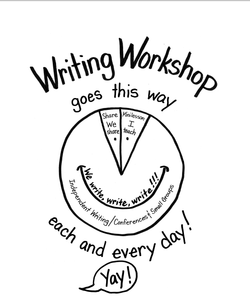
EXPECTATIONS & RULES FOR WRITING WORKSHOP & LEADING A WRITERLY LIFE:
MOST IMPORTANT: Carry your notebook with you at all times. You never know when you will be inspired to jot down your story ideas or observations.
EXPECTATIONS:
1. Find topics and purposes for your writing that matter to you, your life, who you are, and whom you want to become.
2. Keep a list of your possible topics as a writer.
3. Try new topics, purposes, audiences, genres, forms, and techniques.
4. Make your own decisions about what’s working and what needs more work in pieces of your writing. Be the first responder to your writing, and read yourself with a critical, literary eye and ear.
5. Listen and ask questions about and comment on others’ writing in ways that help them improve their writing.
6. Take notes of information presented in writing mini-lessons, recorded chronologically.
7. Recognize that readers’ eyes and minds need your writing to be conventional in format, spelling, punctuation, and usage. Work toward conventionality and legibility, and use everything you know about format, spelling, punctuation, and usage as you compose.
8. Take care of the writing materials and resources.
9. Each day, establish and work toward significant, relevant goals for yourself as a writer.
10. In every writing workshop, take a deliberate stance toward writing well: try to make your writing effective and use what you’ve been shown in conferences and mini-lessons to help you get there.
11. Work hard in writing workshop. Remain focused and on task during class.
RULES:
1. Save everything, it’s all part of the history of the piece of writing, plus you never know what you might want to come back to later and use.
2. Date and label everything you write to keep track of what you’ve done.
3. Write on one side of the paper only, and always double space. Both will make revision, polishing, and editing easier and more productive.
4. Draft your writing in sentences and paragraphs.
5. Get into the habit of punctuating and spelling as well as you can while you’re composing.
6. Understand that writing is thinking. Do nothing to distract the other writers. Don’t put your words into our brains as we’re struggling to find our own. Instead, find your private, internal writing place, lock the door and listen to your voice.
7. Whisper when conferencing with teacher and peers.
8. Use the conference area for peer conferencing, and complete the Peer Conferencing Sheet so the writer has a record of what was discussed and can form a plan of action.
9. When you’re stuck or uncertain, use the resources available to you in this room, including your writing notes and your lists of writing topics, and tap the techniques you’ve been shown in conferences and mini-lessons.
10. Everything you intend to publish needs revision. One draft is never enough.
11. Self-edit as completely as you can in a different colour, and complete an editing checklist to show what you know about conventions of writing.
12. When a piece of writing is finished, clip or staple everything together, including drafts, notes, lists, editing checklist, and peer conference form. File it in the publish section of your binder, with the final copy on top.
13. Write as well and as much as you can, and work hard; dedication makes a good writer.
2. Date and label everything you write to keep track of what you’ve done.
3. Write on one side of the paper only, and always double space. Both will make revision, polishing, and editing easier and more productive.
4. Draft your writing in sentences and paragraphs.
5. Get into the habit of punctuating and spelling as well as you can while you’re composing.
6. Understand that writing is thinking. Do nothing to distract the other writers. Don’t put your words into our brains as we’re struggling to find our own. Instead, find your private, internal writing place, lock the door and listen to your voice.
7. Whisper when conferencing with teacher and peers.
8. Use the conference area for peer conferencing, and complete the Peer Conferencing Sheet so the writer has a record of what was discussed and can form a plan of action.
9. When you’re stuck or uncertain, use the resources available to you in this room, including your writing notes and your lists of writing topics, and tap the techniques you’ve been shown in conferences and mini-lessons.
10. Everything you intend to publish needs revision. One draft is never enough.
11. Self-edit as completely as you can in a different colour, and complete an editing checklist to show what you know about conventions of writing.
12. When a piece of writing is finished, clip or staple everything together, including drafts, notes, lists, editing checklist, and peer conference form. File it in the publish section of your binder, with the final copy on top.
13. Write as well and as much as you can, and work hard; dedication makes a good writer.
THE WRITER'S NOTEBOOK:

IT'S A PLACE TO:
THINK OUT LOUD
DREAM
SCHEME
ASK QUESTIONS
WONDER
WANDER
PLAN
OBSERVE
IMAGINE
DESCRIBE
EXPLAIN
CREATE
SHARE
CARE
COLLECT
RESPOND
THINK OUT LOUD
DREAM
SCHEME
ASK QUESTIONS
WONDER
WANDER
PLAN
OBSERVE
IMAGINE
DESCRIBE
EXPLAIN
CREATE
SHARE
CARE
COLLECT
RESPOND
| writersnotebook.doc | |
| File Size: | 85 kb |
| File Type: | doc |
